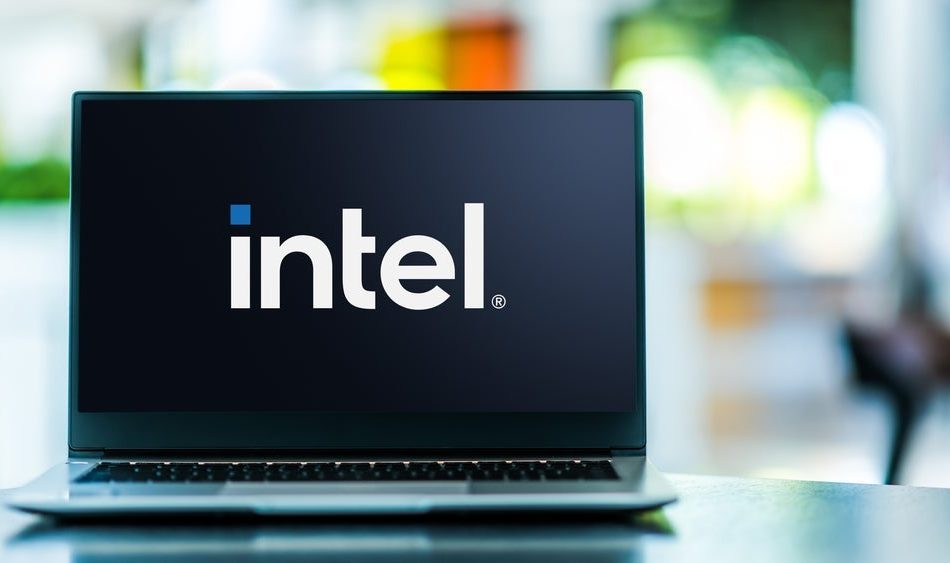Georgia College & State University jumps to No. 4 "Most Innovative School" in U.S. News & World Report's 2025 Best Colleges
Milledgeville, Georgia, Sept. 24, 2024 (GLOBE NEWSWIRE) — Georgia College & State University, the state’s designated public liberal arts university, gained among the elite top 20 universities in the Regional South in U.S. News & World Report’s 2025 Best Colleges guidebook released today.
Georgia College & State University ranks sixth in “Top Public Schools, Regional Universities South,” maintaining the college’s position among the top 10 public universities. GCSU rose in other categories, reaching No. 4 “Most Innovative Schools” among public and private regional universities in the South, a six-point jump from its No. 10 ranking on last year’s Most Innovative list.
Among all public and private universities in the Regional South – a category that includes universities in 12 states from Arkansas to Virginia – Georgia College is ranked No. 15 overall for Regional Universities South.
“Being sixth among all public regional universities and among the top 20 of all public or private universities in this wide territory of the South reflects the distinctive experience we offer our students,” said GCSU President Cathy Cox. “Our uniquely small class sizes, undergraduate research opportunities, vibrant campus life and exciting D-II athletics combine for a private college experience at a public-school price.”
Georgia College & State University is the only state university in Georgia to make the top 20 as a best public Southern regional university.
For Undergraduate Teaching Programs, Regional South, GCSU rose one spot to fifth overall and is No. 1 among public regional universities in Georgia. To be ranked in this category, universities must “have a strong commitment to teaching undergraduates instead of conducting graduate-level research.”
U.S. News also ranks GCSU on its list of Best Value Schools at No. 49 in the Regional South and No. 3 among public regional universities in the state.
“These rankings show that Georgia College students benefit from our contemporary liberal arts education and graduate exceptionally well prepared for their careers with skills like critical thinking, problem solving and communication abilities,” said Cox. “Interest in Georgia College is at an all-time high. Applications to GCSU have grown 44% since Fall 2022 and the 2024-2025 academic year marks our largest overall enrollment ever.”
Located in Milledgeville, Georgia, GCSU is one of three selective admission institutions in the University System of Georgia along with Georgia Tech and The University of Georgia. GCSU enrolled over 7,100 students this academic year from 150 of Georgia’s 159 counties. Students pursue top undergraduate majors inlcuding Business, Nursing, Education, Psychology, Exercise Science and Communications, plus dozens of graduate programs and a pre-med mentoring pathway to medical school admission.
For individual undergraduate programs of study, GCSU ranks as follows:
- Business: No. 1 Public Regional South in Georgia, No. 281 nationally
- Nursing: No. 2 Public Regional South in Georgia, No. 149 nationally
- Psychology: No. 1 Public Regional South in Georgia, No. 293 nationally
- Computer Science: No. 1 Public Regional South in Georgia, Top 500 nationally
U.S. News & World Report designates Georgia College & State University as a Regional University, offering “a full range of undergraduate programs and some master’s programs but few doctoral programs.”
Visit www.gcsu.edu for information.

Amanda J. Respess Georgia College & State University 478-445-7828 amanda.respess@gcsu.edu
Market News and Data brought to you by Benzinga APIs
© 2024 Benzinga.com. Benzinga does not provide investment advice. All rights reserved.
Boeing's Striking Workers Reject 'Best And Final' Offer: '…It Missed The Mark On Many Of The Things'
In a recent development, Boeing Co. BA has made a final pay offer to its striking workers, but the workers’ union has declined to put it to a vote.
What Happened: Boeing, on Monday, made a “best and final” pay offer to its striking workers, which included reinstating a performance bonus, enhancing retirement benefits, and doubling a ratification bonus to $6,000 if the workers accepted the offer by Friday, Reuters reported on Tuesday.
The International Association of Machinists and Aerospace Workers (IAM) declined to vote on the offer, stating that the planemaker had refused to negotiate over the proposal, which did not meet the members’ demands.
“Logistically we don’t have the ability to set up a vote for 33,000 people in a few days like that anyway. Plus, it missed the mark on many of the things our members said were important to them,” said Jon Holden, the president of IAM District 751.
“We are not obligated to vote (on) their offer. We may, down the road. But our hope is that we can get into some discussion so we can actually address the need of our members.”
See Also: X-Rays, Microwaves And Now What? This Company Freezes Weed At -320°F To Kill Mold And Save A Ton
The strike, which began on Sep. 13, is the union’s first since 2008. The workers, who are seeking a 40% pay increase and the reinstatement of a performance bonus, had previously rejected an offer by the company.
Why It Matters: The rejection of Boeing’s final offer comes after the company sweetened its labor deal in an attempt to end the strike that has been costing the planemaker hundreds of millions of dollars each week. The strike began after more than 30,000 machinists in Seattle and Oregon rejected Boeing’s latest contract offer, with 96% voting to walk off. Despite a 25% raise on the table, workers argued the offer failed to match the skyrocketing cost of living in the Seattle area. Negotiations remain tense, and the union’s frustration is mounting.
Boeing’s stock has been affected by the strike, with the company furloughing thousands of U.S. employees, executives, and non-essential contractors in a bid to cut costs.
Price Action: As per Benzinga Pro, Boeing stock closed 1.96% higher at $156.30 on Monday after the company presented the new deal. However, post the rejection, the stock was trading only slightly lower, around 0.15%, during Tuesday’s pre-market.
Read Next:
Photo via Shutterstock
This story was generated using Benzinga Neuro and edited by Pooja Rajkumari
Market News and Data brought to you by Benzinga APIs
© 2024 Benzinga.com. Benzinga does not provide investment advice. All rights reserved.
Peter Thiel-Backed Crypto-Based Betting Platform Polymarket Might Be Contemplating A Token Launch: Report
Popular cryptocurrency-based betting platform Polymarket, which has gained prominence this U.S. election season, might be gearing up to launch its own token.
What happened: The so-called decentralized prediction platform was in talks to raise $50 million in fresh funding, tech-focused publication The Information reported Monday, citing sources familiar with the matter.
“Investors in the round will receive token warrants, which grant them the right to purchase tokens if Polymarket launches them at a later date,” the report added.
It was further revealed that Polymarket could use the potential token as a way for users to validate the outcome of real-world events.
Polymarket didn’t immediately respond to Benzinga’s request for clarification on the matter.
Earlier in May, Polymarket announced raising $70 million, led by tech billionaire Peter Thiel’s Founders Fund and Ethereum ETH/USD founder Vitalik Buterin.
Why It Matters: Polymarket, built atop Ethereum’s Layer-2 chain, Polygon MATIC/USD facilitates buying and selling outcome shares using cryptocurrencies. The shares can be redeemed for $1 if the outcome is correct and become worthless if it’s incorrect.
Polymarket’s trade volume has exploded in recent months, with August reaching over $472.7 million and September already seeing $400.21 million, according to the on-chain analytics platform Token Terminal.
With almost $1 billion wagered on who would win the battle for the White House between Donald Trump and Kamala Harris, the platform has profited from the excitement surrounding the U.S. elections.
Should the startup proceed with the token launch, it would be among the most prominent debuts in the recent history of the cryptocurrency market.
Read Next:
Photo courtesy: Hubert Burda Media
Market News and Data brought to you by Benzinga APIs
© 2024 Benzinga.com. Benzinga does not provide investment advice. All rights reserved.
This 5.5%-Yielding Dividend Stock Is Steadily Rebuilding Its Payout Following a Strategic Reset
W. P. Carey (NYSE: WPC) made a difficult decision last year. The diversified real estate investment trust (REIT) saw a myriad of headwinds facing the office sector, which led it to make the strategic decision to exit that space. As a result of that move and a desire to be more conservative, it also reset its dividend.
It has already started to rebuild its portfolio and shareholder payout. With more growth ahead (and an attractive 5.5% yield), the REIT is a great option for those seeking passive income.
The great reset
W. P. Carey unveiled its strategy plan to exit the office sector last September. At the time, offices provided about 16.1% of its annual base rent. It spun off a portion of that portfolio to shareholders by creating office REIT Net Lease Office Properties.
W. P. Carey has since sold all the properties it didn’t spin off. The REIT also had a major tenant exercise its option to purchase a portfolio of self-storage properties it leased.
With a big chunk of its portfolio (and rental income) gone, W. P. Carey had to reset its dividend. It opted for a nearly 20% reduction to lower its dividend payout ratio from around 80% to a range of 70%-75%. That lower level allows it to retain more cash to fund new investments.
Building back better
The sales of offices and other properties have raised over $1 billion in cash. The REIT plans to eventually recycle that capital into new properties with better long-term rent growth prospects than offices, like warehouses and industrial properties. In the meantime, it has significantly strengthened its balance sheet. It ended the second quarter with a 5.4 times leverage ratio, below its mid-to-high-5s target range.
W. P. Carey is steadily using its financial capacity to build back its portfolio. By the end of July, the REIT had invested $641 million into new properties. Notable investments have included buying a 19-property portfolio of industrial and warehouse buildings across the U.S. and Canada for $190 million in a two-phase deal. It also recently purchased a three-property, newly built distribution center and two fitness centers leased to an existing tenant.
With the headwind of property sales in the past and new properties entering the portfolio, W. P. Carey expects its adjusted funds from operations (FFO) to trend higher in the second half of this year. Meanwhile, with its liquidity at an all-time high, interest rates falling, and a large and growing deal pipeline, W. P. Carey expects its acquisition volume will accelerate. It sees its 2024 investment volume between $1.25 billion and $1.75 billion.
With its portfolio and cash flow growing again, W. P. Carey has already started to rebuild its reset dividend. It has raised its payment three times this year by a total of almost 2%, including bumping its next dividend payment up by 0.6%.
That steady upward trend in the dividend should continue. W. P. Carey aims to grow its payout along with its adjusted FFO. With its investment volume likely to ramp up in the future, its dividend could grow at an even faster rate.
More income growth ahead
W. P. Carey jettisoned its office properties due to the headwinds facing that sector. It’s using the proceeds from those sales and others to invest in properties with more long-term rent-growth potential. That’s enabling the REIT to start rebuilding its dividend.
The company’s high-yielding payout should continue to grow as its portfolio expands. That makes it a great option for those seeking an attractive, steadily rising stream of passive income.
Should you invest $1,000 in W.P. Carey right now?
Before you buy stock in W.P. Carey, consider this:
The Motley Fool Stock Advisor analyst team just identified what they believe are the 10 best stocks for investors to buy now… and W.P. Carey wasn’t one of them. The 10 stocks that made the cut could produce monster returns in the coming years.
Consider when Nvidia made this list on April 15, 2005… if you invested $1,000 at the time of our recommendation, you’d have $710,860!*
Stock Advisor provides investors with an easy-to-follow blueprint for success, including guidance on building a portfolio, regular updates from analysts, and two new stock picks each month. The Stock Advisor service has more than quadrupled the return of S&P 500 since 2002*.
*Stock Advisor returns as of September 23, 2024
Matt DiLallo has positions in Net Lease Office Properties and W.P. Carey. The Motley Fool has no position in any of the stocks mentioned. The Motley Fool has a disclosure policy.
This 5.5%-Yielding Dividend Stock Is Steadily Rebuilding Its Payout Following a Strategic Reset was originally published by The Motley Fool
3 No-Brainer Interest-Rate-Sensitive Dividend Stocks to Buy Right Now for Less Than $1,000
The S&P 500 index currently offers a scant 1.3% dividend yield. The average utility is yielding about 2.9%, using the Utilities Select Sector SPDR Fund (NYSEMKT: XLU) as an industry proxy. That’s more than twice what you’d get from the average S&P 500 stock, and highlights why utilities are a good place to shop when looking for dividend stocks.
Plenty of dividend stocks out there rely on borrowing as part of their business models and changes in interest rates have a direct effect on their operations. With the Federal Reserve lowering the fed funds rate last week (and strongly hinting that additional cuts are coming), the interest rates banks charge for borrowing are likely to drop over the next year or two. That should bode well for this class of stocks.
Here are three strong dividend-paying utility stocks set to benefit from the Fed’s actions that investors will want to consider right away.
1. NextEra is a dividend growth story
NextEra Energy‘s (NYSE: NEE) dividend yield is 2.4%. That’s actually below the utility average, which might discourage some investors. That’s why a closer look is needed. The big story with NextEra is actually dividend growth. Not only has the company increased its dividend annually for three decades, but the average annualized increase over the past 10 years was a huge 10%! That includes increases over the past one-, three-, and five-year periods of 10%, suggesting this is a reliable dividend growth stock.
A 10% dividend growth rate would be good for any company. Half that rate would be pretty strong for a utility. The driving force behind NextEra’s dividend growth is the mix of assets it has in its portfolio. The foundation is its regulated utility operation in Florida, a state that has long benefited from population growth. On top of that, NextEra has built one of the world’s largest solar and wind companies. The clean energy investment has provided a historical growth opportunity, and it will continue to offer the runway for future growth as the world continues its shift toward cleaner energy alternatives.
Lower interest rates will make it easier to afford the capital spending needed to keep growing its clean energy footprint. If you are a dividend growth investor, you’ll want to reexamine NextEra Energy now that the Fed’s rate regime has shifted.
2. Dominion Energy is working on a turnaround
Dominion Energy (NYSE: D) hasn’t been growing its business of late. It has been shrinking it. Its most recent move was to sell three natural gas utilities to Canada’s Enbridge. The cash generated from that sale was put toward strengthening Dominion’s balance sheet.
Utilities own assets that are expensive to build and maintain but that, thanks to regulatory oversight (and monopolies in the regions they serve), tend to produce reliable cash flows. As such, utilities generally make heavy use of leverage. But, sometimes, the debt load can get a bit ahead of a company. Fixing that situation is usually a slow process — unless that is, a utility like Dominion starts raising cash in some other way. Selling assets is an example of a way to quickly reduce leverage.
With less leverage as a main management goal, however, Dominion is set to get an assist from the Federal Reserve’s move to lower rates. In the grand scheme of things, 50 basis points isn’t a massive change on an absolute level. But when you consider that the utility has $32.6 billion in debt on its balance sheet, every basis point counts! The benefit will show up first in revolving credit facilities, but over time the company’s cost for refinancing debt will be lower, too.
Dominion’s 4.6% dividend yield is well above average for a utility, but that’s because it is a bit of a turnaround story. That said, it is a pretty low-risk stock, and the turnaround effort just got a little easier.
3. Black Hills is a Dividend King
With a market cap of $4.2 billion, Black Hills (NYSE: BKH) is a relatively small utility company. However, it has an above-average 4.2% dividend yield. That yield is extra attractive given that Black Hills has increased its dividend every single year for 54 consecutive years, making it a highly elite Dividend King. There are only a few other utilities that can make that claim, so if you care about dividend consistency, you’ll want to have Black Hills on your shortlist.
Note, too, that the dividend has grown at a 5% annualized rate over the past decade. Sure, that’s half the growth rate of NextEra Energy’s dividend, but it’s still a very solid number for a slow and steady dividend grower. The one wrinkle with Black Hills is that it tends to carry more leverage than other utilities, which means that rising interest rates tend to hit the company a bit harder — thus the higher-than-average yield. But that story changes when rates are falling, as Black Hills will have an easier time on the interest expense front.
Unlike Dominion, Black Hills is not a turnaround story. It is just a well-run utility continuing to be well-run. However, if that sounds good to you, then you might want to buy it now. Falling interest rates will only make this (kind of boring) utility stock more compelling.
Lower rates are a good thing for utilities
NextEra Energy, Dominion Energy, and Black Hills aren’t the only utilities that will benefit from falling interest rates. But they represent three different investment paths to consider, from dividend growth to a turnaround to a slow and steady dividend tortoise. The shift toward lower rates should make all of them more attractive investments.
Should you invest $1,000 in Dominion Energy right now?
Before you buy stock in Dominion Energy, consider this:
The Motley Fool Stock Advisor analyst team just identified what they believe are the 10 best stocks for investors to buy now… and Dominion Energy wasn’t one of them. The 10 stocks that made the cut could produce monster returns in the coming years.
Consider when Nvidia made this list on April 15, 2005… if you invested $1,000 at the time of our recommendation, you’d have $710,860!*
Stock Advisor provides investors with an easy-to-follow blueprint for success, including guidance on building a portfolio, regular updates from analysts, and two new stock picks each month. The Stock Advisor service has more than quadrupled the return of S&P 500 since 2002*.
*Stock Advisor returns as of September 16, 2024
Reuben Gregg Brewer has positions in Black Hills, Dominion Energy, and Enbridge. The Motley Fool has positions in and recommends Enbridge and NextEra Energy. The Motley Fool recommends Dominion Energy. The Motley Fool has a disclosure policy.
3 No-Brainer Interest-Rate-Sensitive Dividend Stocks to Buy Right Now for Less Than $1,000 was originally published by The Motley Fool
Elon Musk Dons His MAGA Hat To Meet Pro-Bitcoin President Javier Milei: Duo Discuss Argentina's Journey To Normalcy
Tesla and SpaceX CEO Elon Musk met Argentina president Javier Milei, displaying camaraderie reminiscent of their previous meetings.
What Happened: A video shared by the official X handles of Milei and Musk showed the two greet each other with a warm handshake.
Interestingly, Musk wore a MAGA (Make America Great Again) hat, and made a gesture pointing to it, evoking laughs from the Argentinian leader, though the exact words exchanged were unclear as of this writing.
Milei is in town to deliver Argentina’s national address to the United Nations General Assembly on Tuesday.
Musk then proceeded to meet other people in Milei’s entourage. Finally, the tech czar posed with the president, giving a double thumbs up, a photo-op similar to one seen during their previous meeting.
According to presidential spokesperson Manuel Adorni, Musk and Milei talked about a range of economic policies introduced by Argentina, including deregulation and tax incentives like RIGI, aimed at boosting investments in the South American nation. The two also discussed Argentina’s path to normality.
Why It Matters: Musk and Milei previously connected on the sidelines of the 27th annual Milken Institute Global Conference in May, after which the multibillionaire had famously said, “I recommend investing in Argentina.”
Earlier this month, Musk was all praise for Milei’s policies in “restoring Argentina’s greatness.
A free-market proponent, Milei secured victory in the November elections after promising large cuts in public spending to address Argentina’s fiscal deficit and increasing inflation. His libertarian stance is also reflected in his support for Bitcoin BTC/USD, making him one of the very few heads of state to openly endorse the asset.
However, the president has also faced criticism for his austerity measures, with many taking to the streets to oppose his attempts to halt the increase in pension spending.
Image via Shutterstock
Read Next:
Market News and Data brought to you by Benzinga APIs
© 2024 Benzinga.com. Benzinga does not provide investment advice. All rights reserved.
CrossCountry Mortgage Honoring Projected 2025 Conforming Loan Limits Up to $802,650
CLEVELAND, Sept. 23, 2024 /PRNewswire/ — CrossCountry Mortgage (CCM), the nation’s number one retail mortgage lender launched its Early Bird Product, which allows homebuyers to take advantage of the projected 2025 conventional loan limits ahead of the Federal Housing Finance Agency’s (FHFA) official announcement in November. With the Early Bird Program, borrowers can now access up to a $802,650 conventional loan amount, an increase from the current limit of $766,550.
“CCM understands the challenges faced by homebuyers in the current market and is committed to providing innovative solutions to meet their needs,” said Jenn Stracensky, CCM Chief Operating Officer. “The Early Bird Program is our way of helping borrowers seize opportunities and navigate their path to homeownership.”
The Early Bird Product not only offers competitive loan amounts but also comes with comprehensive support and guidance from CCM’s highly experienced loan originators. Borrowers will receive education on a variety of loan options, including conventional loans, ensuring they make informed decisions that suit their financial situations.
For more information about CCM’s product portfolio and to explore the Early Bird Program, contact a CCM loan officer.
About CrossCountry Mortgage
CrossCountry Mortgage (CCM) (CCM) is the nation’s number one distributed retail mortgage lender with more than 7,000 employees operating over 700 branches and servicing loans across all 50 states, D.C. and Puerto Rico. Our company has been recognized ten times on the Inc. 5000 list of America’s fastest-growing private businesses and has received many awards for our standout culture. We offer more than 120 mortgage, refinance and home equity solutions – ranging from conventional and jumbo mortgages to government-insured programs from FHA and programs for Veterans and rural homebuyers – and we are a direct lender and approved seller and servicer by Freddie Mac, Fannie Mae, and Ginnie Mae. Through our dedication to getting it done, we make every mortgage feel like a win.
Contact:
Natalie Lonjak Director
Corporate Communications
Natalie.Lonjak@ccm.com
![]() View original content to download multimedia:https://www.prnewswire.com/news-releases/crosscountry-mortgage-honoring-projected-2025-conforming-loan-limits-up-to-802-650–302256152.html
View original content to download multimedia:https://www.prnewswire.com/news-releases/crosscountry-mortgage-honoring-projected-2025-conforming-loan-limits-up-to-802-650–302256152.html
SOURCE CrossCountry Mortgage
Market News and Data brought to you by Benzinga APIs
© 2024 Benzinga.com. Benzinga does not provide investment advice. All rights reserved.
Intel, Which Cratered Around 77% From Its 52-Week Peak, Finds A New Knight In Shining Armor As Qualcomm And Apollo Propose Buyout Deal, But This Analyst Thinks It Doesn't Make Sense: 'It Seems Very Risky To Us Given Uncertain Returns'
Qualcomm Inc. QCOM is reportedly considering a buyout of Intel Corp. INTC, a move that could significantly diversify Qualcomm’s product offering. However, analysts are warning of potential challenges that could hinder the success of this acquisition.
What Happened: Qualcomm’s interest in acquiring Intel has been met with skepticism from analysts, reported Business Insider. The potential deal, which could help Qualcomm expand, is seen as a risky move due to Intel’s struggling semiconductor manufacturing unit.
Intel’s shares have plummeted approximately 77% from their 52-week high, making the company an attractive target not just for Qualcomm but also for Apollo Global Management APO, which reportedly proposed to make an equity-like investment of up to $5 billion in the company.
However, Stacy Rasgon, a prominent chip analyst from Bernstein, expressed skepticism about the potential deal. “We would prefer that Qualcomm not pursue this as it seems very risky to us given uncertain returns,” Rasgon and his team wrote.
Qualcomm aims to diversify its revenue streams by entering the PC and data center markets, which Intel dominates. However, Intel’s semiconductor factories, or fabs, pose significant challenges. Rasgon noted that Intel has struggled to manage its fabs, allowing competitors like TSMC to gain an edge.
Rasgon also highlighted the political importance of Intel’s U.S.-based fabs in Arizona, Oregon, and New Mexico. He speculated that Qualcomm might sell these fabs if the acquisition goes through, but questioned whether Intel is desperate enough to consider such a move.
“Is Intel desperate enough to seriously consider something like this? We’re not so sure,” Rasgon and his team concluded.
Why It Matters: The potential acquisition of Intel by Qualcomm could face significant hurdles, according to analysts. The deal could reportedly encounter rigorous antitrust scrutiny globally, given that it would merge two major chip firms. This could create a giant with significant market shares in smartphones, PCs, and servers.
Benchmark analyst Cody Acree said the acquisition is “logically unlikely.” According to Acree, Qualcomm would need to offer a compelling 40% to 50% premium over the current trading price of around $22 for shareholders to take the deal seriously. However, the regulatory scrutiny surrounding the transaction may be too difficult to overcome.
Meanwhile, Intel has been facing its own challenges, with CEO Pat Gelsinger presenting a comprehensive plan to the board in September. The plan focuses on asset sales and cost reductions, including halting a $32 billion project in Germany.
If the Qualcomm-Intel deal goes through, it could result in one of the largest M&A deals ever, surpassing Microsoft Corporation’s $69 billion acquisition of Activision Blizzard.
Price Action: Intel’s shares closed 3.3% higher on Monday at $22.56, while Qualcomm’s shares closed 1.75% lower at $165.96, according to Benzinga Pro data.
Image via Shutterstock
Market News and Data brought to you by Benzinga APIs
© 2024 Benzinga.com. Benzinga does not provide investment advice. All rights reserved.
Walmart, Leidos And A Financial Stock: CNBC's 'Final Trades'
On CNBC’s “Halftime Report Final Trades,” Stephen Weiss of Short Hills Capital Partners named Leidos Holdings, Inc. LDOS as his final trade.
On Sept. 18, Leidos said Tina Jonas has been appointed to the company’s board of directors, effective Sept. 25.
“Tina Jonas brings extensive defense and aerospace leadership experience in both government and industry to the Leidos Board of Directors,” said Leidos CEO Tom Bell. “Her insights will be invaluable as we work to support our critical customer missions and our nation’s warfighters. We’re confident her contributions will help continue to drive innovation and growth for our organization, and we’re honored to welcome her to the board.”
Jenny Harrington of Gilman Hill Asset Management said The Western Union Company WU has an 8% dividend yield.
On July 30, Western Union reported worse-than-expected second-quarter adjusted EPS results. Western Union reported quarterly earnings of 44 cents per share, which missed the analyst consensus estimate of 45 cents per share. The company reported quarterly sales of $1.066 billion, which beat the analyst consensus estimate of $1.060 billion.
Don’t forget to check out our premarket coverage here
Joseph M. Terranova of Virtus Investment Partners picked Walmart Inc. WMT.
On Sept. 23, Melius Research analyst Karen Short initiated coverage on Walmart with a Buy rating and announced a price target of $95. Walmart is reportedly sweetening its pay-by-bank feature in Walmart Pay, allowing customers to pay directly from their checking accounts rather than debit cards, with transactions instantly reflected in their bank accounts.
Price Action:
- Leidos gained 1.7% to close at $159.68 during Monday’s session.
- Western Union shares gained 2% to settle at $11.98 on Monday.
- Walmart shares gained 1.6% to close at $80.33 on Monday.
Check This Out:
Image created using artificial intelligence via Midjourney.
Market News and Data brought to you by Benzinga APIs
© 2024 Benzinga.com. Benzinga does not provide investment advice. All rights reserved.
New US rule would require GM, Ford to halt imports of cars they build in China, official says
By David Shepardson
WASHINGTON (Reuters) -General Motors and Ford Motor would need to stop importing vehicles to the U.S. from China under a proposed rule cracking down on Chinese software and hardware, a U.S. Commerce Department official told Reuters Monday.
The rule would also affect other automakers selling or building vehicles in the U.S., such as Volvo Cars and BYD.
GM sells the Buick Envision and Ford sells the Lincoln Nautilus — both assembled in China — in the U.S. market. Ford did not comment. In the first six months of 2024, GM sold about 22,000 Envisions and Ford sold 17,500 Nautilus SUVs in the U.S.
“We anticipate at this point that any vehicle that is manufactured in China and sold in the U.S. would fall within the prohibitions,” said Liz Cannon, who heads the Commerce Department’s information and communications technology office.
GM and Ford are aware, she added, that “going forward” that production in China for the U.S. market “would need to be shut down in China and moved elsewhere.”
GM did not address if it thought it would have to halt sales of the Envision but added the “government has an important role to set clear policies” on security issues.
Commerce said it would allow companies to seek a “specific authorization” to continue sales of vehicles or components.
China’s BYD North America, a unit of BYD, which builds electric buses in Lancaster, California could be impacted. The company did not immediately comment.
“We will have to work with them to better understand their supply chain,” Cannon said. “They will have to come in for a specific authorization.”
For example, software would likely be prohibited if it were developed by a team of Chinese employees in that country for a Chinese automaker. But software would likely be allowed if it were developed by Chinese employees working in another country for a non-Chinese company.
Reuters reported in May four Chinese vehicle models are sold in the U.S. including the Polestar 2 and Volvo’s S90 sedans. Polestar and Volvo are affiliates of Chinese automaker Geely.
Cannon said she expects companies like Volvo will meet with Commerce “to work with us to talk about ways that they could mitigate the risk and we are open to that” and the agency could grant them an authorization.
Volvo Cars said “We are reviewing the proposal from the U.S. Commerce Department and are analyzing any potential impact it might have on us and the auto industry in the U.S.”
(Reporting by David Shepardson; Editing by David Gregorio)










